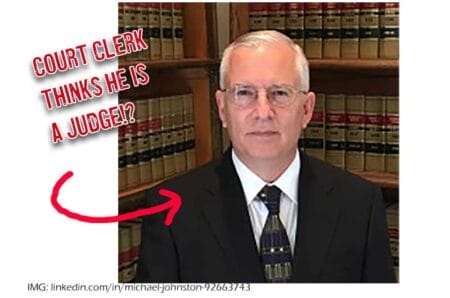Opinion
With the U.S. District Court decision in Colorado finding that Americans have no constitutional right to acquire firearms, and a major oral argument in the U.S. Court of Appeals for the Sixth Circuit about the right to train with firearms, we are presented with a perfect opportunity to discuss an often-overlooked fact about the right to bear arms.
Specifically, the Second Amendment protects a host of rights beyond the rights to possess and carry firearms.
These additional rights are unequivocally implied by the Second Amendment’s language. Ancillary rights, as we call them in constitutional law, don’t often get the same level of attention as those rights explicitly spelled out in the Bill of Rights, but they are equally important—and equally protected. These ancillary or implied rights are necessary to the practice and exercise of the rights and liberties laid out in our Constitution.
To illustrate, one of the freedoms guaranteed by the First Amendment’s text is the right of free speech. But that right also protects a host of other ancillary rights such as the right to paper and ink, the right to print and sell newspapers, and the right of access to the public square (or social media). Similarly, the U.S. Supreme Court has found that the right to counsel guaranteed by the Sixth Amendment implies the right to pay for a lawyer, or to have counsel appointed in serious cases for indigents.
When it comes to the Second Amendment, there are at least four primary ancillary rights that arise from the plain text:
-
the right to train with firearms,
-
the right to purchase firearms,
-
the right to make firearms,
-
and the right to acquire ammunition.
But, one may ask, how do we protect those implied rights when the Supreme Court has said we must focus on the Second Amendment’s plain text?
There are a couple of ways this works, but one way is to focus on the word “infringed.” Implied rights are protected by the plain text of the Second Amendment, because that text says that the right to keep and bear arms shall not be infringed. In Heller, the Supreme Court looked at dictionary definitions of the text of the amendment as well as usage contemporaneous with its passage. Founding-era dictionaries such as Samuel Johnson’s and Noah Webster’s tell us that “infringed” means to hinder or destroy. So, as a matter of plain text, the government infringes on our rights when it hinders the right to keep arms and the right to bear arms. And it hinders the right to keep and bear arms if the government imposes restrictions on ammunition, acquiring arms, and training with arms.
One of the most important ancillary rights when it comes to the Second Amendment is the right to train. Because the American colonists were incredibly proficient in their use of firearms, they were able to hold their own against the highly trained (and better armed) British army and obtain their independence. When the right to train is infringed, so is the right to bear arms—there is not much use in bearing an arm that you don’t know how to use! And, the “well regulated militia” that is referenced in the Second Amendment’s prefatory clause speaks directly to the importance of an armed and trained American citizenry.
The right to train arose recently in the U.S. Court of Appeals for the Sixth Circuit in Oakland Tactical Supply, LLC v. Howell Township, MI. There, according to relevant court allegations, a township instituted zoning restrictions that prevented the construction of a 1,000-yard shooting range. Both the town attorney and the three-judge panel doubted whether gun ranges of that size were necessary for citizens to exercise the right to train, and wondered why townsfolk couldn’t train on their own property. But as firearm technology improves, so does the necessity to train over longer distances. Today, government-sponsored shooting competitions organized by the Civilian Marksmanship Program test marksmanship at distances as long as 1,000 yards! The right to train is important to exercising one’s Second Amendment rights, whether it is at 100 yards or 1,000 yards. And none of this is new. Oakland Tactical’s brief cited examples from the Revolution of American soldiers killing enemies at distances up to 900 yards.
Given that long-range rifle accuracy was considered essential to the success of the Revolution, the notion that long-range training is not protected would have been unimaginable to the Founding generation.
Another important ancillary right is the right to acquire firearms. But some courts still refuse to apply basic constitutional law principles when it comes to the Second Amendment. Just this week, a U.S. District Court found that there was no right to acquire firearms. Refusing to engage in a robust analysis of the meaning of “shall not be infringed” and then lazily relying on dicta about commercial firearm transactions in Heller, the “inferior” court in Rocky Mountain Gun Owners v. Polis denied a preliminary injunction motion involving Colorado’s new waiting period law. That the right to keep arms necessarily implies a right to acquire arms ought to be obvious to courts and politicians alike, but it bears repeating: the premise of the right to keep arms is, as a logical matter, entirely dependent on the right to acquire or come into possession of arms. In Heller, the Supreme Court held that the word “keep” means to “possess” arms. The right to “possess” or “have” arms must entail the right to acquire those arms. Of course, acquisition can take place either through purchasing firearms or making them.
Therefore, laws that restrict an individual’s ability to purchase a firearm or make one for his or her own use must be supported with Founding era historical analogue laws just like any other restriction on Second Amendment rights.
The Minneapolis Star case decided by the U.S. Supreme Court in 1983 illustrates the principle of ancillary rights. There, the Court determined that a burdensome tax on the use of paper and ink was an infringement on First Amendment rights; after all, the tools used to practice a constitutional right must be as easily accessible as the right itself. So too with the Second Amendment and the right to purchase firearms. Any action on the part of the government to hinder (or infringe) the right to purchase implicates the plain text of the amendment.
The right to purchase firearms was at issue in the U.S. Court of Appeals for the Fifth Circuit case Reese v. BATFE. There, the court considered whether a federal statute prohibiting 18–20-year-olds from purchasing firearms from a federally licensed dealer (FFL) violated the Second Amendment. The answer is: Yes! In the United States, 18–20-year-old persons are legal adults. They are not prohibited from owning a firearm under federal law, but they are not legally permitted to purchase a handgun from a federally licensed dealer. Because the federal statute at issue in Reese improperly restricts the ancillary right of 18–20-year-olds to purchase a firearm, it infringes on the explicit right to keep arms under the Second Amendment. And, lest there be any doubt about young adults having the right to acquire their own private firearms during the Founding, check out the Militia Act of 1791, which required them to bring their own private firearms and ammunition with them to militia musters!
The right to train, purchase a firearm, make a firearm, and possess ammunition are of the utmost importance to exercising our Second Amendment rights.
These rights must be guarded with the same vigilance as all other aspects of our Bill of Rights. Courts must not take such a narrow view of the text of the Second Amendment that the explicit and implicit rights guaranteed therein cannot be exercised or protected.
Mark’s recent speech about the Second Amendment in Washington, D.C. to the Federalist Society at its National Lawyers Convention can be seen here.
About Mark W Smith
Constitutional attorney and bestselling author Mark W. Smith, host of the Four Boxes Diner Second Amendment channel on Youtube, is a member of the U.S. Supreme Court Bar. His Second Amendment scholarship has been cited by many attorneys and judges, including by attorneys in legal briefs submitted to the Supreme Court in NYSRPA v. Bruen and in U.S. v. Rahimi.
His most recent book is DISARMED: What the Ukraine War Teaches Americans about the Right to Bear Arms.






But what difference does it make as to what ANY “law” says or doesn’t say, when you have incompetent idiots and morons wearing a black robe giving their “interpretation” of what it says, or ignoring it completely?!?! And THAT is exactly what the fake judges do!! They legislate from the bench, because they are allowed to do so under the rules of Admiralty jurisdiction. Here’s how it works, ladies and gentlemen. You are presumed to be bound by some kind of a contract, when you really aren’t. One of the rules that you don’t know about, is that if you… Read more »
I would LOVE to TRAIN in my own yard. However, when other dwellings are less than 500 feet, it IS TO DANGEROUS to train in my yard. I now have to travel over 20 miles to train on a 100 yard public range in Cecil county. OR, I have to pay to train on one of two 50 foot indoor ranges.
Overlooked in the article is the Second Amendment’s reference to a well regulated militia. In the timeframe when the Bill of Rights was written, “regulated” meant “equipped.”. This means that the 2A preserves the right to acquire the equipment – weapons, training, ammunition, accessories, etc. – required to be well equipped to perform militia duties.
Why is the woman pictured wearing a plate carrier with no plates? As for the article, yes, these ancillary rights are violated by the authoritarian wanna-be dictators along with the primary right to KABA, as we see with Fauxahantas’ proposed bill this month to require NICS checks for ammo, and to inform FBATFE of every ammo purchase and purchaser details, creating an illegal list of gun owners. This is yet another example of behavior from politicians that the founders and first Gen Americans would address with tar and feather s.